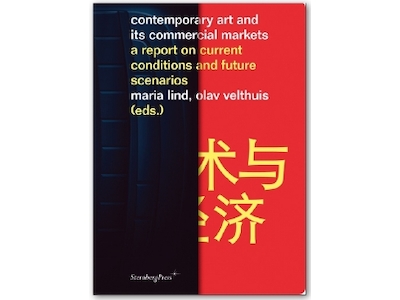Tainted Love: Art's Ethos and Capitalization
Malik, Suhail and Phillips, Andrea.
(2012).
In Contemporary Art and its Commercial Markets. A Report on Current Conditions and Future Scenarios.
Edited by Lind, Maria and Velthuis, Olav.
Sternberg Press, pp. 209-240.
(Book Chapter; English).
![[thumbnail of 20120000_malik_phillips_tainted_love_front.jpg]](/327/1.hassmallThumbnailVersion/20120000_malik_phillips_tainted_love_front.jpg)  Preview |
Cover Image
20120000_malik_phillips_tainted_love_front.jpg Download (59kB) | Preview |
Preview |
PDF (Full Text)
20120000_malik_phillips_tainted_love.pdf Download (708kB) | Preview |
Abstract or Brief Description
The commercial methods and transactional processes of the art market contravene in almost every way the free market principles and investment assumptions and patterns core to modern global finance. What Noah Horowitz calls the art market’s "anti-speculative vehemence" is intimately allied to its protagonist’s amorous-erotic investment in art, widely flaunted in the highly visible acquisition of blue-chip art by capitalist elites as much as in the cloying discourses in public and private art sectors supporting and relying upon such expenditure. The centrality of this amorous ethos to the concentration of social and capital power in art relies upon and maintains the belief that while art is indeed traded on a market it is rather that market’s obstruction of liberal free-market principles and practices that accords with an involvement in art itself. Simultaneously, the domination of capital power in art means that art’s audiences are now obliged to share in the capriciousness of the subjective love of art allied to the corporatism of capital power rather than a previously assumed statist 'care' for public culture, providing in the process an ersatz-public legitimization for such power.
This paper seeks to remove the support for the decontamination of capitalized power through art’s amorous ethos. Since art-prices are explicitly financially generated without reference to production or consumption, they make manifest the condition of all price-setting—or what could be called capital’s procedural and operational “financiality”, the term designating finance as the primary condition for, rather than consequence of, capitalization and price-setting. As such, the art market embodies the truth of finance, and it does so precisely in its failure or limitations of art as a kind of free-market investment. It is not then that art pricing is a puzzle compared to other, productive or consuming, sectors of the economy, but that the art market dispels their obscuring of capitalization as the primary determinant of price. The convergence of interests and operations of art (in particular contemporary art) and capital elites can then be apprehended not as paradox but as consistent, reconfiguring in the process the significance of the love of art as the condition and satisfaction of its protagonists’ involvement in it.
Language
EnglishPublication Type
Book ChapterKeywords
art market capital power capitalization financiality legitimization love price setting privatization sabotageSubject
BN PowerBN Culture
BN Capital & Accumulation
BN Value & Price
Depositing User
Jonathan NitzanDate Deposited
03 Mar 2012Last Modified
07 Apr 2016 19:23URL:
https://bnarchives.net/id/eprint/327Actions (login required)
 |
View Item |
